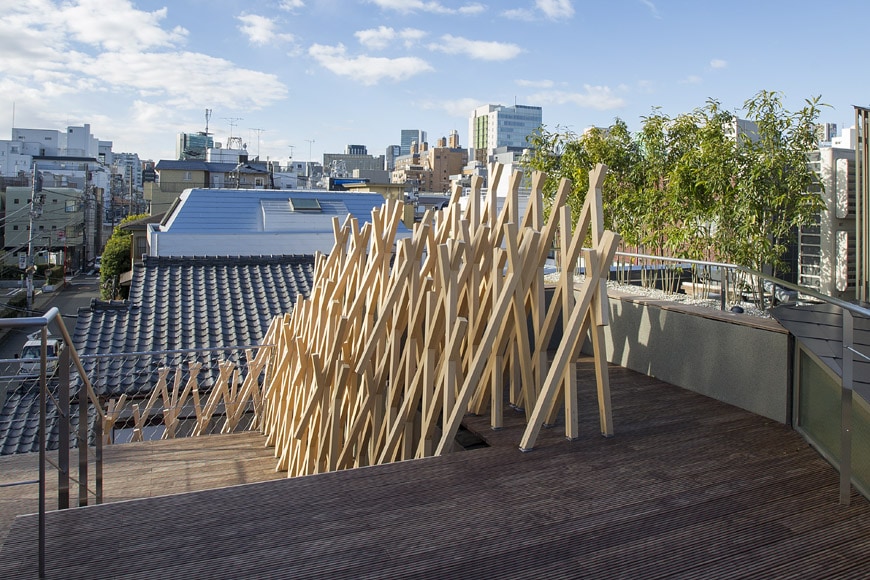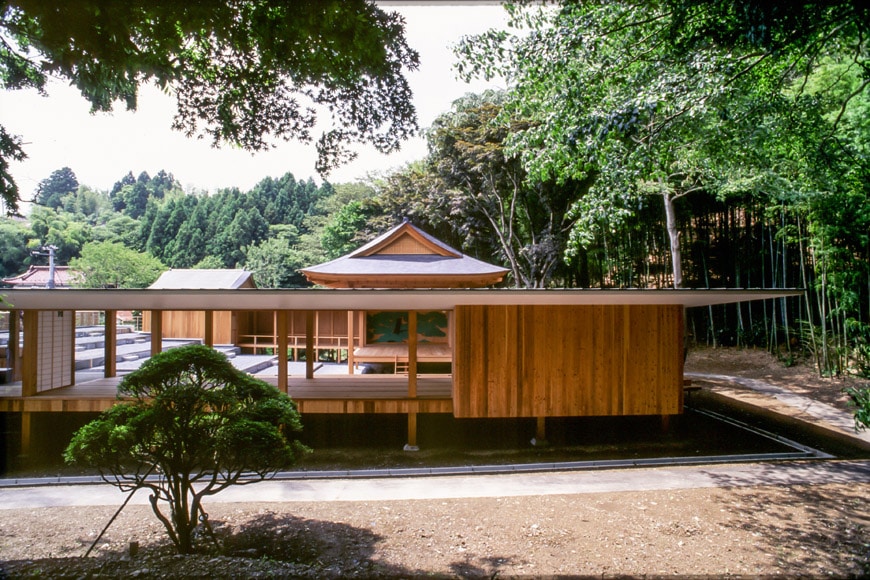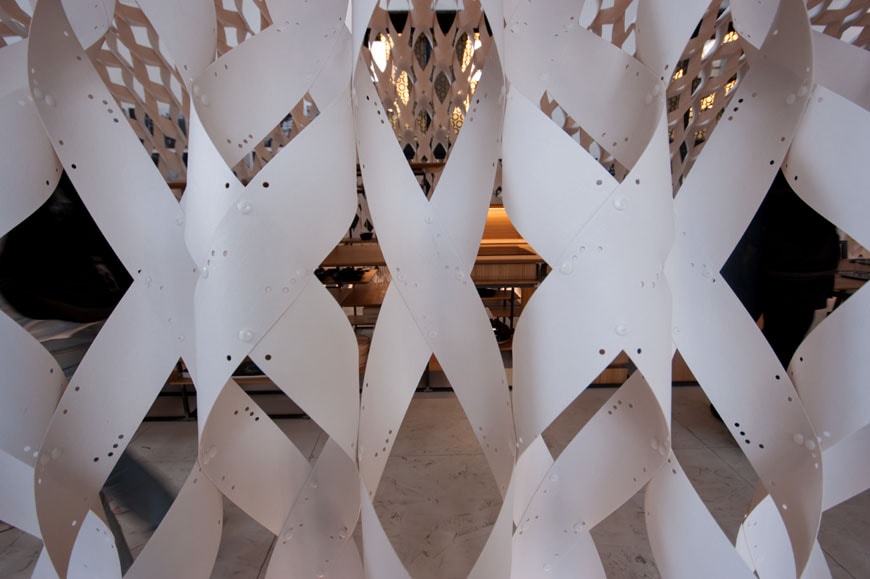Architects ought to be humble, Kengo Kuma says
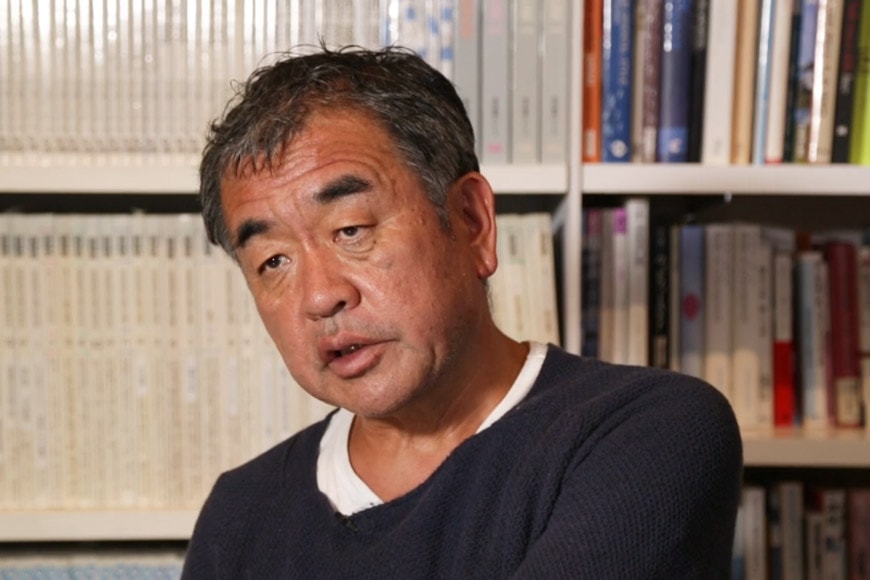
In a recent video interview from the Time Space Existence series (you can see it here thanks to our media partner PLANE-SITE) acclaimed Japanese architect Kengo Kuma expresses some truly interesting thoughts about architecture and the role of architects in today’s world.
In the interview, made in the architect’s Tokyo office, Kuma particularly focuses on three points.
In the first, he talks about modesty, a quality arguably quite rare in most architectural offices. In Kuma’s vision, for architects, humbleness originates from working slowly and methodically, moving step by step, without haste, from small, relatively modest projects – into which architectural design merges with simple and budget-conscious construction techniques – towards larger, more ambitious ones.
The second point reflects the approach of Kuma himself to architectural design, a process that begins with an almost physical experience of the place where a new building will be built.
“Whenever I start a project, I myself walk along the site and try to feel the reality of the place. If I touch the ground with my own feet and I touch the trees with my hand, I can feel the reality of the place, that’s my method. And that’s the starting point of the conversation with a place”, Kuma says.
Another fundamental element of Kuma’s design philosophy is the relationship with nature and the aspiration to make it merge with architecture, a lesson the architect learned when working to projects in Japan’s countryside during the 1990s, and which explains his preference for natural, locally sourced materials.
The third point focuses on the relationship between architecture, space, and time; a theme all the video interviews of the TSE series share and investigate.
For Kuma, the key point of the relationship between architecture and space is the transition “from architecture as a monument to architecture as environment” which for him marks the transition from the 20th to the 21st century, and from industrialization to post-industrialization. Talking about time, for Kuma building and time should merge into one, dynamic totality since “We cannot control time. Time is always flowing, and architecture should be part of that kind of flow”, a concept deeply rooted in the Buddhist culture the Japanese architect plainly admires.
Full transcript
“Architects of modern times are very elegant, but to be humble is not so easy for us.
It is a kind of dilemma of our profession.
It will be a very slow process, it will not be an easy process, but we try to work slowly, step by step, to achieve that kind of humbleness.
Whenever I start a project, I myself walk along the site and I try to feel the reality of the place.
If I touch the ground with my own foot and I touch the trees with my hand, I can feel the reality of the place. That is my method. And that is the starting point of the conversation with a place.
The design philosophy behind Kengo Kuma & Associates is to create human, warm, natural spaces. To achieve that goal, we try to use as much natural material as possible and try to merge architecture and nature as much as possible.
We started as Kengo Kuma & Associates in 1986, but after 1991, suddenly the Japanese economy was gone. In those ten years, we decided to leave Tokyo.
Our main field was basically the countryside of Japan and in those projects, we did work with local craftsmen and local materials. In those ten years, the projects were very very small, but for us, it was the most fruitful period; and after 2000, we could go to the next step. We transferred our wisdom which we learned from the local craftsmen to bigger projects and different contexts.
“Time, space, existence” is a definition of three things that are slowly changing from architecture as monument to architecture as environment; from the 20th century to the 21st century; from industrialization to post-industrialization. We cannot control time as time is always flowing. Architecture also should be part of that kind of flow. I don’t know what will happen after I pass away after the office disappears. The only thing we can do is merge our building into time. The perfect relationship between time and architecture is to become one totality. And if we can achieve that kind of totality, the distance (between time and architecture) will disappear.
One of my role models is the Buddhist priest. The priests often travel to different places and they speak to people with honesty, and through those communications with the local people they can achieve something with the people. I don’t want to stop my trip, I want to continue traveling and I want to continue speaking with people forever.”
The video (click to play)
About Kengo Kuma
Born in 1954 in Yokohama, Japan, Kengo Kuma studied architecture at the University of Tokyo and, later, Columbia University. In 1987, he founded the Spatial Design Studio before establishing Kengo Kuma & Associates in 1990. Kuma’s works – sometimes characterized by peculiar envelopes that resemble hand-woven fabric – combine references to traditional Japanese design and craftsmanship with innovative forms that often make creative use of state-of-the-art digital fabrication techniques.
Kuma’s most significant buildings include the Stone Museum in Nasu, the Noh Stage in the Forest pavilion in the Miyagi prefecture, the Nagasaki Prefectural Museum, the Sunnyhills Showroom and the Asakusa Cultural Center in Tokyo, and the River / Filter restaurant in Fukushima.
Projects currently underway include the V&A Museum Dundee and the 2020 Tokyo Olympic Stadium.
About Time-Space-Existence
Time, space, and existence. These three concepts sketch out the contours of the world around us — a fact especially true within architecture. Taking these words as its starting point, the GAA Foundation is set to curate its fourth collateral exhibition in the context of La Biennale di Venezia Architettura, entitled Time-Space-Existence, and opening in May 2018. Featuring over 100 established and emerging architects, and unapologetically international in breadth, the exhibition provides a fascinating complement to a biennial traditionally drawn along national lines.
Useful links
PLANE-SITE: https://plane-site.com/
European Cultural Centre (ECC): https://www.europeanculturalcentre.eu/index.php
Kengo Kuma & Associates: https://kkaa.co.jp/
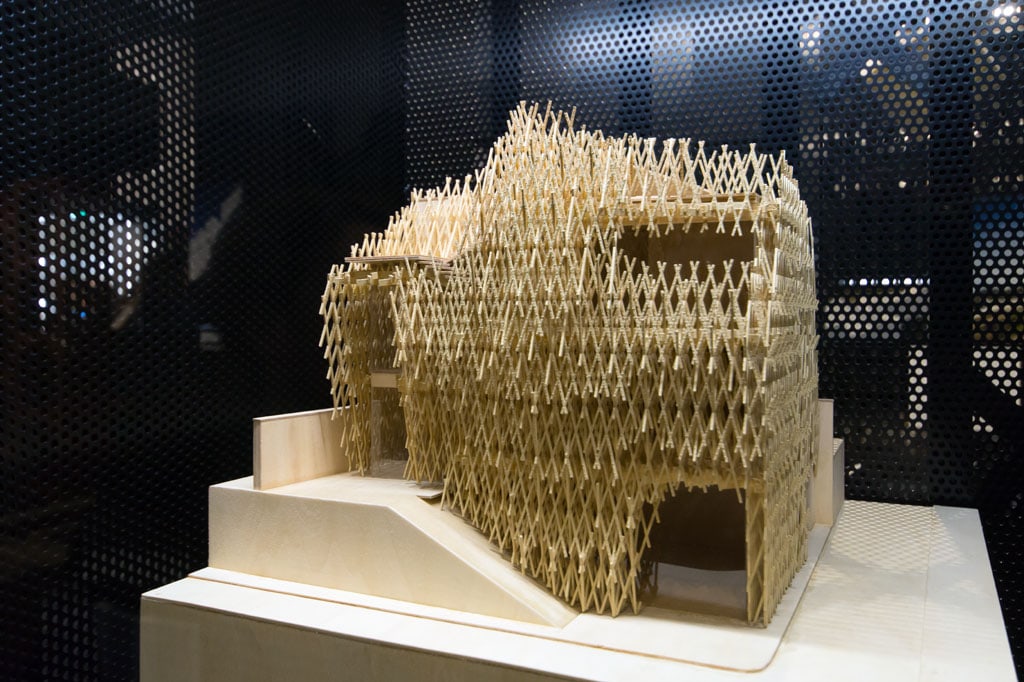
Kengo Kuma & Associates, Sunnyhills showroom, Tokio, 2013; photos © Inexhibit, and © Alessio Guarino
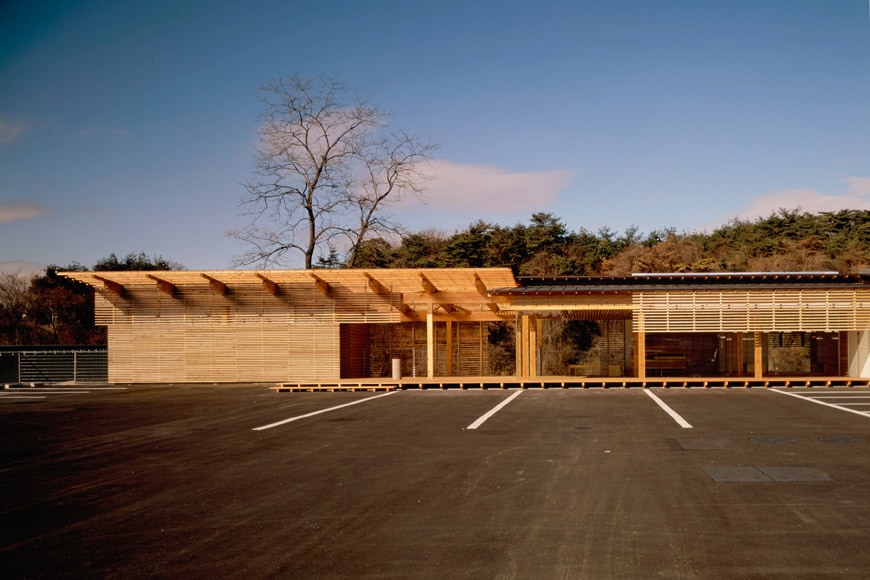
Kengo Kuma & Associates, River / Filter restaurant, Fukushima, 1996; photo © Mitsumasa Fujitsuka
Kengo Kuma & Associates, Noh Stage in the Forest pavilion, Teraike-kamimachi, 1996; photo © Mitsumasa Fujitsuka
Kengo Kuma, the Irori installation in Milan (detail), 2015; photo © Inexhibit
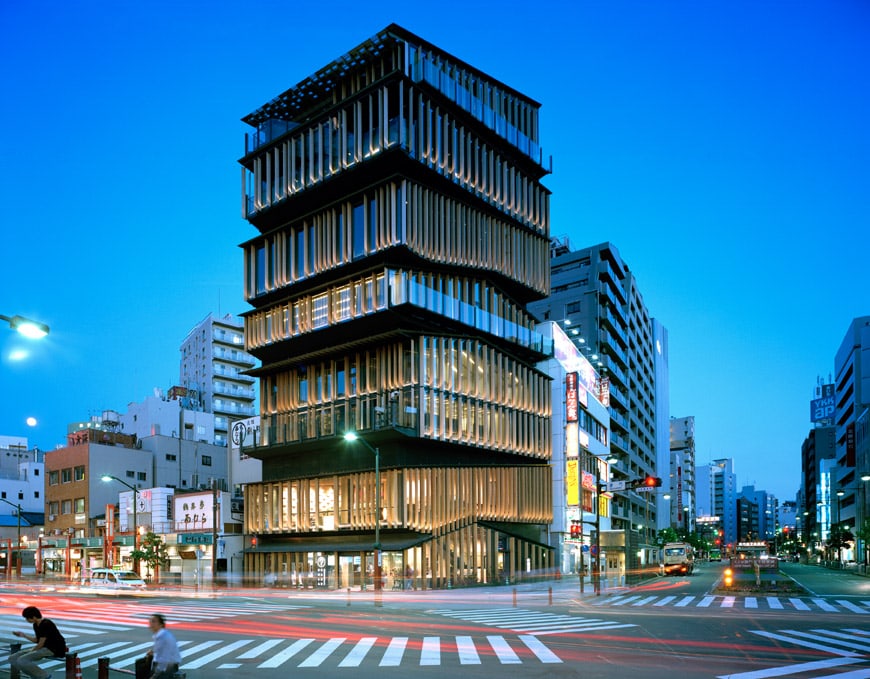
Kengo Kuma & Associates, Asakusa Cultural Center, Tokyo, 2012; photo © Takeshi Yamagishi
Cover image © PLANE-SITE
copyright Inexhibit 2024 - ISSN: 2283-5474

